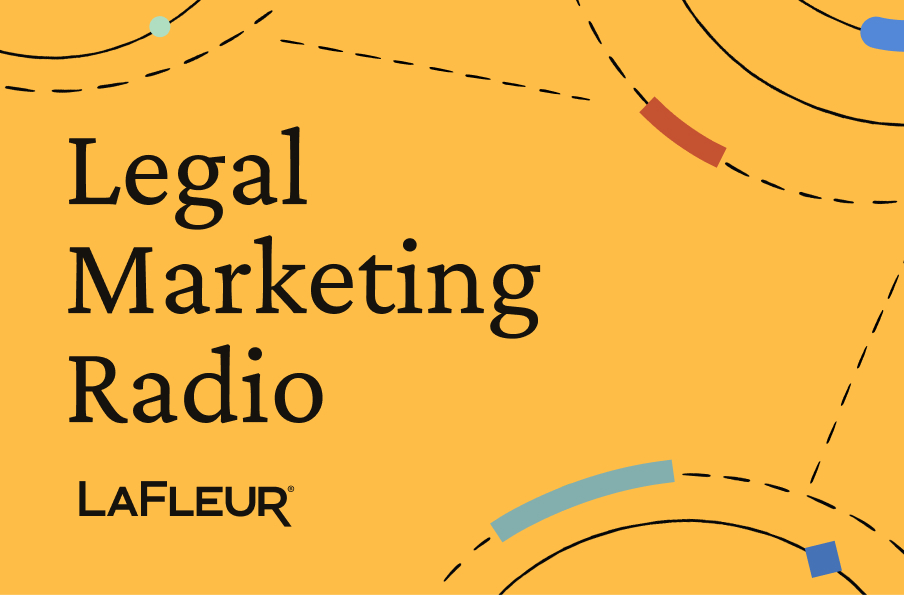In celebration of Disability Pride month, we sat down with LaFleur’s in-house accessibility specialist, Jon Olson, to discuss how accessibility impacts web design and development, his passion for accessible websites, and what people need to know about ADA-compliant websites.

***
LaFleur: How did you get into ADA compliance and accessibility?
Jon Olson: [As a] web developer, I deal with accessibility. I got into accessibility when I was looking for a job in the pandemic. I did some research into the field, and I thought “that it’s a good fit,” because I do have a disability and I understand what it feels like to be excluded.
So, initially I taught myself a lot. I also earned my Certified Professional in Accessibility Core Competencies (CPACC) from the International Association of Accessibility Professionals, and websites should be accessible for everybody.
LF: And this is an actual law, not just our personal opinions.
JO: Right. Retailers have to provide “equal access to places of accommodations,” and because so much of life and the economy happens online, that includes the internet. The case that sparked this change was filed against Domino’s by a blind man who couldn’t use the website because it wasn’t accessible. He won, and now there are big penalties for companies that don’t have accessible sites. The first violation can be a $75,000 fine, and $150,000 for each additional offense.
However, there aren’t very many rules or guidelines for developing accessible websites, so it’s up to experts like us to guide the conversation and lead change.
LF: So, what is the thought process when you’re developing and designing a website?
JO: There’s visible and invisible disabilities. If we don’t accommodate people in both the physical and digital world, it magnifies people’s disabilities. If we make spaces accessible, it lessens the effect of the disability. You’re only “disabled” in a world that doesn’t accommodate you.
Online, we have to take all of this into account. Designing for visual disabilities, physical disabilities for people who navigate websites differently, closed captioning and transcription for deaf users, not too much motion for people with sensory differences. It can be a lot to think about, so there’s got to be a process for the company to make things easier. That’s where I can help.
There aren’t very many rules or guidelines for developing accessible websites, so it’s up to experts like us to guide the conversation and lead change.
LF: Can you bust some accessibility misconceptions for us?
JO: There’s a lot more involved with accessibility than people realize. There’s a misconception that accessible websites are ugly, but you can still design a beautiful website while making it accessible.
A big part of this is because a lot of things that aren’t visible on the webpage impact usability. For instance, alt text for an image is good for screen readers, but when it’s hidden on the back end, it doesn’t work, and the image won’t be accessible.
For example, a home icon is something you can see, but on a screen reader it picks up the alt text of “home” when it’s activated. Even though the text “home” is hidden on the page. It just makes the website that much easier for someone using a screen reader to navigate.
LF: How does ADA compliance and accessibility impact users who might not need a screen reader to navigate the internet?
JO: There are still benefits for these people. The people who may not realize they need access items can still benefit from them.
For example, closed captioning; there are people who can hear, but with closed captioning, they can tell exactly what’s going on, especially with audio that’s difficult to hear, or if you’re watching a video with the sound off.
Disability also doesn’t have to be permanent. There are also situational disabilities. For example, if you break your wrist, you might not be able to use your mouse, so you need to figure out different ways to navigate a website using different means. You may have to use keyboard tabs to navigate instead of a mouse.
LF: What is a misconception people have about accessible websites? Let’s say someone is ready to build a new website. What would you want them to know about the process?
JO: Your website doesn’t have to be ugly and boring, or expensive and time consuming. Which, they are if you retrofit an inaccessible website with accessibility features.
But, if you build in these items from the start, it’s not time consuming, ugly, or expensive.
Also, you might think that accessibility only benefits a small percentage of people. However, an ADA compliant website increases SEO performance, website users, decreased costs with upgrades and new technology, and helps with brand reputation. Users will go there if it’s easily accessible. Why would they choose a competitor that’s more difficult to access?
LF: Do you have any tips for people interested in accessibility, either as developers or as a business owner?
JO: If you’re a developer interested in building accessible websites, I would start by researching accessibility. Find people who are accessibility specialists, find a mentor, and ask questions. There are a lot of resources for accessibility.
One thing to note for businesses who want accessible features integrated in their website—be aware that there are companies that advertise as an accessibility company, but more times than not, they just do overlays and it’s really not accessible. It’s a trick that educated people fall for because they don’t do their research. It’s a marketing trick.
Users will go there if it’s easily accessible. Why would they choose a competitor that’s more difficult to access?
LF: How can people avoid those traps?
JO: A genuine accessibility expert won’t cold call or cold email you to offer services that promise results “with one click of a button.” One button won’t make your website accessible! It’s a much more in-depth and thoughtful process.
LF: What’s on the horizon for ADA compliance and accessibility?
JO: Right now, it’s the wild, wild west. It’s hard to enforce the law around ADA compliance in the digital world. We’re making progress, but we still have a ways to go. It’s change I’m excited to be part of and I can’t wait to see where the field goes next.
At LaFleur, accessibility is a year-round endeavor
LaFleur is proud to design and build ADA compliant, accessible websites that don’t compromise beauty and function. If your highly regulated business is ready to get started, we’re ready to help.
To learn more about our web development services, or any of our other digital marketing solutions, send us a message or give us a call at (888) 222-1512. We look forward to speaking with you!




